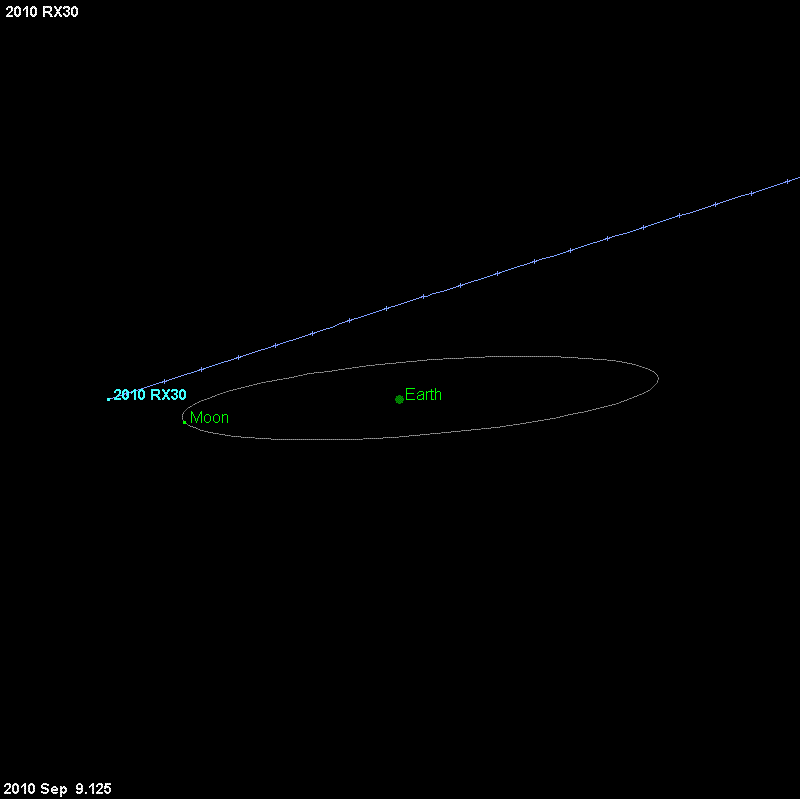
Two asteroids, several meters in diameter and in unrelated orbits, will pass within the Moon's distance of Earth on Wednesday, September 8th. The Catalina Sky Survey near Tucson Arizona discovered both objects on the morning of September 5 during their routine monitoring of the skies. The Minor Planet Center in Cambridge Massachusetts first received the observations Sunday morning, determined preliminary orbits and concluded that both objects would pass within the distance of the Moon about three days after their discovery. Near Earth asteroid 2010 RX30 is estimated to be 10 to 20 meters in size and will pass within 0.6 lunar distances of Earth (about 248,000 km) at 9:51 Greenwich standard time (5:51 am EDT) Wednesday. The second object, 2010 RF12, estimated to be 6 to 14 meters in size will pass within 0.2 lunar distances (79,000 km) a few hours later at 21:12 Greenwich standard time (5:12 pm EDT). Both objects should be observable near closest approach with moderate sized amateur telescopes. Although neither of these object has a chance of hitting Earth, a ten meter-sized near-Earth asteroid from the undiscovered population of about 50 million would be expected to pass almost daily within a lunar distance, and one might strike Earth's atmosphere about every ten years on average.
For each for the two Earth approaching asteroids, 2010 RX30 and 2010 RF12, there is an oblique view from 7 degrees above the ecliptic plane and a top down view from the north ecliptic pole. In each diagram, the sun is to the left and the time ticks are at 2 hour intervals. The trajectories for 2010 RX30 and 2010 RF12 end on September 9 at 03:00 and September 10 at 00:00 hours respectively. Both objects pass by the Earth in roughly the same direction from the night sky region (to the right of the Earth) to the day sky, which is on the left. Photo Credit: Paul Chodas.
See the website for more details. http://neo.jpl.nasa.gov/news/news169.html (SY) |
